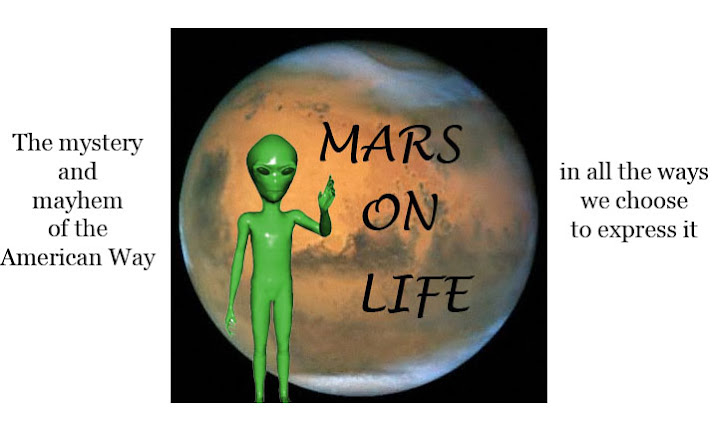
Here's a thankless job: Assume, for one collection, the mantle of a deceased designer whose last, corporate-directed effort was a deadly Middle America hook-up with J. C. Penney. From this corpus delecti watch as a Hollywood mogul attempts to prove, via large infusions of cash, that no crime had occurred. Whip up some highly derivative ready-to-wear clothing that covers the designer's biggest hit (a Pat Nixon shirtdress) and the designer's oft-overlooked miss (ill-fitting jumpsuit crotches).
And then get fired when your second collection is in the bag but not on yet on the catwalk.
That's the short, sad tale of Marco Zanini, victim of the oldest game in the book, and that game is not in resurrecting labels a decade or two in the grave. The game is Hollywood, as played by Harvey Weinstein, who knows a thing or two about art and commerce. In case you are not familiar, Mr. Weinstein's specialty has been in transcending the art house and making the indie film mainstream. Such skill when applied to rebirthing a fashion label that was anything but independent should have been...
A snap? Or a seam or a zipper or a frog closure?
Halston did not spring, contrary to what one would have believed from reading People magazine in 1977, fully formed on the dance floor of Studio 54. Fifteen years prior, he'd been a sensible hat designer. By 1972 he had sold his company and by the mid-1980s had been fired by his bosses. Central to this story was Halston's adjacency to the Manhattan cocaine culture, that happy bedfellow of the disco inferno.
Mr. Weinstein must have looked at the Halston label as if it were another Hollywood property ready for "treatment," one with a good story behind it. Whatever Zanini's impulses may have been, someone handed him a script and told him to stick to it. That script consisted mostly of clichéd adage: A classic never goes out of style. If you build it, they will come. Never give a sucker an even break.
Audiences who have grown up with Mr. Weinstein's movies have matured the way his choice of projects has; those who rushed to see Madonna simulate oral sex in Truth or Dare later found themselves entranced with the embrace of The English Patient. And Hollywood thrives on formula, so why shouldn't the fashion industry follow suit?
Fashion is another story altogether. Right out of the Net-à-Porter box, there was generational indifference. The type of uptown woman who wore Halston in the 1970s was now in her own seventies; store buyers found a line of little or no consequence to their customers. What Mr. Weinstein must have felt was a cash cow--one of the biggest during Halston's heyday--was instead a sclerotic outing in design recidivism.
In Mr. Zanini's favor, the task was a daunting one. The clothing was the easy part. What Zanini showed was the collection of a capable seamstress, and one that must have passed muster somewhere west of Manhattan, where things like close-ups and long shots are debated and the director nothing but a technician.
Mr. Zanini got to retell the story of Halston, circa roughly 1972-1979, or around the time that Halston bridged the gap between the Upper East Side and MGM. From Mr. Weinstein's perspective, this must have seemed like a very strong script indeed, and everyone knows that you don't tinker with a proven formula. Unlike the increasingly sophisticated themes of Mr. Weinstein's movies, however, there was very little new to add to the Halston label. By the time of its recent release, the audience was gone. Why the design label was considered any different was anyone's guess. It must be the influence of the music industry; Zanini's apparel was cover versions.
The Hollywood proclivity for remakes has a bad track record, and it seems highly unlikely that a retread Pulp Fiction would fare well at the box office. So why did Weinstein greenlight Pulp Fashion?
Halston was such a bedrock of disco culture that when it died, he did too, even if he held on for another sixteen years before succumbing to AIDS. He, unlike deceased French couturiers before him, occupied a special fashion niche somewhere between couture and ready-to-wear, but was truly closest to the latter, even when his clothes were still being sold at Bergdorf's. His main claim to fame was simplicity and breezy fashion Americana, even if his apparel was quickly eclipsed by his new career as disco's brightest Bacchus.
Zanini's cover versions couldn't work in today's climate, where success depends on throwaway novelty. This novelty isn't the same 1970s novelty that spawned the Pet Rock and the mood ring; it is far more insidious and largely directed by the warp-speed instant gratification of the Internet. Today's novelty resides in individuality of expression while at the same time being victim to new metrics: Why buy a cover version Halston when the same thing is available, in mint condition, on eBay?
Still, Zanini couldn't reinvent Halston any more than Weinstein could remake Kill Bill with a chickenshit Bride. Because of that, his--and Zanini's--relationship to Halston could only be doting and reverential. Whatever impulses may have existed to push the limits on smart independence, the line was too narrow to straddle without crossing too far in one direction or another. To err on the side of caution, Zanini sketched within the lines and then, with his second collection still to be shown, was rubbed out as quietly as a third-rate snitch.
The Halston label must have seemed tailor-made to receive the Hollywood treatment, even as the market--middlebrow America--ranged away from the market for the Miramax films. The deceased protagonist was a character fit for Hollywood muscle-flexing, resulting in an intertwined ethnography dating back some 30 or more years. Added to this was the involvement of Mr. Weinstein's bride, Georgina Chapman, and Tamara Mellon, both of whom had extensive and successful experience in the fashion industry. All three knew chance and mysteriously failed to take one, even if the collection as shown would have been revolutionary in 1978. One hesitates to ponder a different outcome had the line been directed home to its last destination, J. C. Penney. Or whether Mr. Zanini, late of Versace, would have accepted such a defeatist agenda.
Mr. Zanini fell victim to was Day of the Locust disposability coupled with a total misreading of the present market. Hollywood has always skewed young, something Ms. Mellon and Ms. Chapman could not have failed to notice. In the end, Halston was a fiction that couldn't be rewritten to appeal to this younger, modern audience. Mr. Zanini, unwittingly, ran head on into the colliding cultures while specifying the Halston label as a serious subject. Or someone did, but Hollywood loves a comeback. It was one thing for John Travolta as Vincent Vega, but reanimating--or even recasting--Halston may prove impossible. How much did Mr. Weinstein have to do with creative decisions, and how much influence did he exert over the finished product? That's the real story, not the Zanini ouster. As ever, the inner workings of the Hollywood machine are a mystery to the man on the street, and to the woman who sat unmoved by Mr. Zanini's freshman outing for the line. There's a little acting art known as improvisation. Too bad Mr. Zanini never got a chance to try it on for size.
Monday, July 21, 2008
Pulp Fashion
Labels:
Halton,
Harvey Weinstein,
Marco Zanini
Subscribe to:
Post Comments (Atom)









7 comments:
They did generate a lot of excitement with that quick turnaround of runway looks on Net-a-Porter.
Which weren't exactly as shown!
http://runway.blogs.nytimes.com/2008/02/12/
What a great insight. I agree, it's too bad Zanini didn't get a chance. He was cut off at the knees.
Fascinating piece, S...
Hollywood and fashion - how fickle they can be.
I find this whole Halston thing so sad! If I were Halston, I would've told them to stop a long time ago! Sometimes it's better to just leave it be because now they're putting all this mess on the Halston name and we're not remembering the good of the brand and what his influences were on the fashion world. Maybe Harry Weinstein should stick to movies, Rachel Zoe to styling celebs, and Tamara Mellon to Jimmy Choos. I even read somewhere that Harry put his own money down on the brand, talk about high roller. I guess we'll have to wait and see what happens to Halston next...
Oooh, and I love your blog! Very insightful and informative reads! I'm adding you to my links!!
Lovely post. You really write well.
BTW, would you like to do a link exchange?
Post a Comment